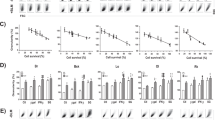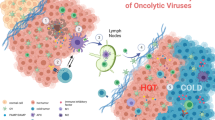Abstract
Activity and specificity of chemotherapeutic agents against solid tumors can be augmented via the targeted or localized delivery of ‘suicide’ genes. Selective activation of specific prodrugs in cells expressing the ‘suicide’ gene drives their elimination by apoptosis, while also enabling the killing of adjacent bystander cells. Strong bystander effects can compensate for poor ‘suicide’ gene delivery, and depend on the prodrugs used and mechanisms for the acquisition of activated drug by the bystander population, such as the presence of gap junctional intercellular communications. Although a number of ‘suicide’ gene therapies for cancer have been developed and characterized, such as herpes simplex virus-derived thymidine kinase (HSV-tk)-based activation of ganciclovir, their limited success highlights the need for the development of more robust approaches. Limiting activation kinetics and evolution of chemoresistance are major obstacles. Here we describe ‘suicide’ gene therapy of cancer based on the lentivirus-mediated delivery of a thymidine-active human deoxycytidine kinase variant. This enzyme possesses substrate plasticity that enables it to activate a multitude of prodrugs, some with distinct mechanisms of action. We evaluated the magnitude and mechanisms of bystander effects induced by different prodrugs, and show that when used in combination, they can synergistically enhance the bystander effect while avoiding off-target toxicity.
This is a preview of subscription content, access via your institution
Access options
Subscribe to this journal
Receive 12 print issues and online access
$259.00 per year
only $21.58 per issue
Buy this article
- Purchase on Springer Link
- Instant access to full article PDF
Prices may be subject to local taxes which are calculated during checkout





Similar content being viewed by others
References
Lyons 3rd JM, Abergel J, Thomson JL, Anthony CT, Wang YZ, Anthony LB et al. In vitro chemoresistance testing in well-differentiated carcinoid tumors. Ann Surg Oncol 2009; 16: 649–655.
Min DJ, Moskowitz NP, Brownstein C, Lee H, Horton TM, Carroll WL . Diverse pathways mediate chemotherapy-induced cell death in acute lymphoblastic leukemia cell lines. Apoptosis 2006; 11: 1977–1986.
Plautz G, Nabel EG, Nabel GJ . Selective elimination of recombinant genes in vivo with a suicide retroviral vector. New Biol 1991; 3: 709–715.
Mullen CA, Kilstrup M, Blaese RM . Transfer of the bacterial gene for cytosine deaminase to mammalian cells confers lethal sensitivity to 5-fluorocytosine: a negative selection system. Proc Natl Acad Sci USA 1992; 89: 33–37.
Ram Z, Culver KW, Walbridge S, Blaese RM, Oldfield EH . In situ retroviral-mediated gene transfer for the treatment of brain tumors in rats. Cancer Res 1993; 53: 83–88.
Wu JK, Cano WG, Meylaerts SA, Qi P, Vrionis F, Cherington V . Bystander tumoricidal effect in the treatment of experimental brain tumors. Neurosurgery 1994; 35: 1094–1102; discussion 1102–3.
Takamiya Y, Short MP, Ezzeddine ZD, Moolten FL, Breakefield XO, Martuza RL . Gene therapy of malignant brain tumors: a rat glioma line bearing the herpes simplex virus type 1-thymidine kinase gene and wild type retrovirus kills other tumor cells. J Neurosci Res 1992; 33: 493–503.
Moolten FL . Tumor chemosensitivity conferred by inserted herpes thymidine kinase genes: paradigm for a prospective cancer control strategy. Cancer Res 1986; 46: 5276–5281.
Natsume A, Yoshida J . Gene therapy for high-grade glioma: current approaches and future directions. Cell Adh Migr 2008; 2: 186–191.
Bi WL, Parysek LM, Warnick R, Stambrook PJ . In vitro evidence that metabolic cooperation is responsible for the bystander effect observed with HSV tk retroviral gene therapy. Hum Gene Ther 1993; 4: 725–731.
Chen CY, Chang YN, Ryan P, Linscott M, McGarrity GJ, Chiang YL . Effect of herpes simplex virus thymidine kinase expression levels on ganciclovir-mediated cytotoxicity and the ‘bystander effect’. Hum Gene Ther 1995; 6: 1467–1476.
Rainov NG . A phase III clinical evaluation of herpes simplex virus type 1 thymidine kinase and ganciclovir gene therapy as an adjuvant to surgical resection and radiation in adults with previously untreated glioblastoma multiforme. Hum Gene Ther 2000; 11: 2389–2401.
Vile RG, Russell SJ, Lemoine NR . Cancer gene therapy: hard lessons and new courses. Gene Ther 2000; 7: 2–8.
Silvertown JD, Symes JC, Neschadim A, Nonaka T, Kao JC, Summerlee AJ et al. Analog of H2 relaxin exhibits antagonistic properties and impairs prostate tumor growth. FASEB J 2007; 21: 754–765.
Ardiani A, Sanchez-Bonilla M, Black ME . Fusion enzymes containing HSV-1 thymidine kinase mutants and guanylate kinase enhance prodrug sensitivity in vitro and in vivo. Cancer Gene Ther 2010; 17: 86–96.
Willmon CL, Krabbenhoft E, Black ME . A guanylate kinase/HSV-1 thymidine kinase fusion protein enhances prodrug-mediated cell killing. Gene Ther 2006; 13: 1309–1312.
Wei SJ, Chao Y, Hung YM, Lin WC, Yang DM, Shih YL et al. S- and G2-phase cell cycle arrests and apoptosis induced by ganciclovir in murine melanoma cells transduced with herpes simplex virus thymidine kinase. Exp Cell Res 1998; 241: 66–75.
Garin MI, Garrett E, Tiberghien P, Apperley JF, Chalmers D, Melo JV et al. Molecular mechanism for ganciclovir resistance in human T lymphocytes transduced with retroviral vectors carrying the herpes simplex virus thymidine kinase gene. Blood 2001; 97: 122–129.
Deschamps M, Mercier-Lethondal P, Certoux JM, Henry C, Lioure B, Pagneux C et al. Deletions within the HSV-tk transgene in long-lasting circulating gene-modified T cells infused with a hematopoietic graft. Blood 2007; 110: 3842–3852.
Noble S, Faulds D . Ganciclovir. An update of its use in the prevention of cytomegalovirus infection and disease in transplant recipients. Drugs 1998; 56: 115–146.
Denny WA . Prodrugs for gene-directed enzyme-prodrug therapy (suicide gene therapy). J Biomed Biotechnol 2003; 2003: 48–70.
Lamba JK, Crews K, Pounds S, Schuetz EG, Gresham J, Gandhi V et al. Pharmacogenetics of deoxycytidine kinase: identification and characterization of novel genetic variants. J Pharmacol Exp Ther 2007; 323: 935–945.
Sabini E, Hazra S, Konrad M, Lavie A . Nonenantioselectivity property of human deoxycytidine kinase explained by structures of the enzyme in complex with L- and D-nucleosides. J Med Chem 2007; 50: 3004–3014.
Hazra S, Sabini E, Ort S, Konrad M, Lavie A . Extending thymidine kinase activity to the catalytic repertoire of human deoxycytidine kinase. Biochemistry 2009; 48: 1256–1263.
Hazra S, Ort S, Konrad M, Lavie A . Structural and kinetic characterization of human deoxycytidine kinase variants able to phosphorylate 5-substituted deoxycytidine and thymidine analogues. Biochemistry 2010; 49: 6784–6790.
McSorley T, Ort S, Hazra S, Lavie A, Konrad M . Mimicking phosphorylation of Ser-74 on human deoxycytidine kinase selectively increases catalytic activity for dC and dC analogues. FEBS Lett 2008; 582: 720–724.
Neschadim A, Wang JC, Sato T, Fowler DH, Lavie A, Medin JA . Cell fate control gene therapy based on engineered variants of human deoxycytidine kinase. Mol Ther 2012; advance online publication 24 January 2012; doi: 10.1038/mt.2011.298.
Likar Y, Zurita J, Dobrenkov K, Shenker L, Cai S, Neschadim A et al. A new pyrimidine-specific reporter gene: a mutated human deoxycytidine kinase suitable for PET during treatment with acycloguanosine-based cytotoxic drugs. J Nucl Med 2010; 51: 1395–1403.
Sturtz FG, Waddell K, Shulok J, Chen X, Caruso M, Sanson M et al. Variable efficiency of the thymidine kinase/ganciclovir system in human glioblastoma cell lines: implications for gene therapy. Hum Gene Ther 1997; 8: 1945–1953.
Robe PA, Nguyen-Khac M, Jolois O, Rogister B, Merville MP, Bours V . Dexamethasone inhibits the HSV-tk/ ganciclovir bystander effect in malignant glioma cells. BMC Cancer 2005; 5: 32.
Sato T, Neschadim A, Konrad M, Fowler DH, Lavie A, Medin JA . Engineered human tmpk/AZT as a novel enzyme/prodrug axis for suicide gene therapy. Mol Ther 2007; 15: 962–970.
Yoshimitsu M, Sato T, Tao K, Walia JS, Rasaiah VI, Sleep GT et al. Bioluminescent imaging of a marking transgene and correction of Fabry mice by neonatal injection of recombinant lentiviral vectors. Proc Natl Acad Sci USA 2004; 101: 16909–16914.
Zhang W, DeMattia JA, Song H, Couldwell WT . Communication between malignant glioma cells and vascular endothelial cells through gap junctions. J Neurosurg 2003; 98: 846–853.
Focher F, Maga G, Bendiscioli A, Capobianco M, Colonna F, Garbesi A et al. Stereospecificity of human DNA polymerases alpha, beta, gamma, delta and epsilon, HIV-reverse transcriptase, HSV-1 DNA polymerase, calf thymus terminal transferase and Escherichia coli DNA polymerase I in recognizing D- and L-thymidine 5′-triphosphate as substrate. Nucleic Acids Res 1995; 23: 2840–2847.
Balzarini J, Bohman C, De Clercq E . Differential mechanism of cytostatic effect of (E)-5-(2-bromovinyl)-2′-deoxyuridine, 9-(1,3-dihydroxy-2-propoxymethyl)guanine, and other antiherpetic drugs on tumor cells transfected by the thymidine kinase gene of herpes simplex virus type 1 or type 2. J Biol Chem 1993; 268: 6332–6337.
Freeman SM, Abboud CN, Whartenby KA, Packman CH, Koeplin DS, Moolten FL et al. The ‘bystander effect’: tumor regression when a fraction of the tumor mass is genetically modified. Cancer Res 1993; 53: 5274–5283.
Guan X, Wilson S, Schlender KK, Ruch RJ . Gap-junction disassembly and connexin 43 dephosphorylation induced by 18 beta-glycyrrhetinic acid. Mol Carcinog 1996; 16: 157–164.
Sagar GD, Larson DM . Carbenoxolone inhibits junctional transfer and upregulates connexin43 expression by a protein kinase A-dependent pathway. J Cell Biochem 2006; 98: 1543–1551.
Mansson E, Flordal E, Liliemark J, Spasokoukotskaja T, Elford H, Lagercrantz S et al. Down-regulation of deoxycytidine kinase in human leukemic cell lines resistant to cladribine and clofarabine and increased ribonucleotide reductase activity contributes to fludarabine resistance. Biochem Pharmacol 2003; 65: 237–247.
Bergman AM, Pinedo HM, Peters GJ . Determinants of resistance to 2′,2′-difluorodeoxycytidine (gemcitabine). Drug Resist Updat 2002; 5: 19–33.
Giai M, Biglia N, Sismondi P . Chemoresistance in breast tumors. Eur J Gynaecol Oncol 1991; 12: 359–373.
Fahrig R, Steinkamp-Zucht A, Schaefer A . Prevention of adriamycin-induced mdr1 gene amplification and expression in mouse leukemia cells by simultaneous treatment with the anti-recombinogen bromovinyldeoxyuridine. Anticancer Drug Des 2000; 15: 307–312.
Fahrig R, Heinrich JC, Nickel B, Wilfert F, Leisser C, Krupitza G et al. Inhibition of induced chemoresistance by cotreatment with (E)-5-(2-bromovinyl)-2′-deoxyuridine (RP101). Cancer Res 2003; 63: 5745–5753.
Fahrig R, Quietzsch D, Heinrich JC, Heinemann V, Boeck S, Schmid RM et al. RP101 improves the efficacy of chemotherapy in pancreas carcinoma cell lines and pancreatic cancer patients. Anticancer Drugs 2006; 17: 1045–1056.
ClinicalTrials.gov. Phase II Study to Evaluate Efficacy and Safety of RP101 in Combination With Gemcitabine. Available from http://clinicaltrials.gov/show/NCT00550004.
de Clercq E, Degreef H, Wildiers J, de Jonge G, Drochmans A, Descamps J et al. Oral (E)-5-(2-bromovinyl)-2′-deoxyuridine in severe herpes zoster. Br Med J 1980; 281: 1178.
Benoit Y, Laureys G, Delbeke MJ, De Clercq E . Oral BVDU treatment of varicella and zoster in children with cancer. Eur J Pediatr 1985; 143: 198–202.
Wakamatsu T, Nakahashi Y, Hachimine D, Seki T, Okazaki K . The combination of glycyrrhizin and lamivudine can reverse the cisplatin resistance in hepatocellular carcinoma cells through inhibition of multidrug resistance-associated proteins. Int J Oncol 2007; 31: 1465–1472.
Bourbeau D, Lavoie G, Nalbantoglu J, Massie B . Suicide gene therapy with an adenovirus expressing the fusion gene CD∷UPRT in human glioblastomas: different sensitivities correlate with p53 status. J Gene Med 2004; 6: 1320–1332.
Erbs P, Regulier E, Kintz J, Leroy P, Poitevin Y, Exinger F et al. In vivo cancer gene therapy by adenovirus-mediated transfer of a bifunctional yeast cytosine deaminase/uracil phosphoribosyltransferase fusion gene. Cancer Res 2000; 60: 3813–3822.
Acknowledgements
We would like to acknowledge Dr Jeff C Liu, Dr Giovanni Ciavarra and Dr Eldad Zacksenhaus (Division of Cell and Molecular Biology, Toronto General Research Institute, University Health Network, Toronto, ON) for their assistance with fluorescent microscopy. Funding for AN was provided by the CIHR Training Program in Regenerative Medicine (TPRM). This research was funded in part by the Ontario Ministry of Health and Long Term Care. The views expressed do not necessarily reflect those of the OMOHLTC.
Author information
Authors and Affiliations
Corresponding author
Ethics declarations
Competing interests
The authors declare no conflict of interest.
Rights and permissions
About this article
Cite this article
Neschadim, A., Wang, J., Lavie, A. et al. Bystander killing of malignant cells via the delivery of engineered thymidine-active deoxycytidine kinase for suicide gene therapy of cancer. Cancer Gene Ther 19, 320–327 (2012). https://doi.org/10.1038/cgt.2012.4
Received:
Revised:
Accepted:
Published:
Issue Date:
DOI: https://doi.org/10.1038/cgt.2012.4



